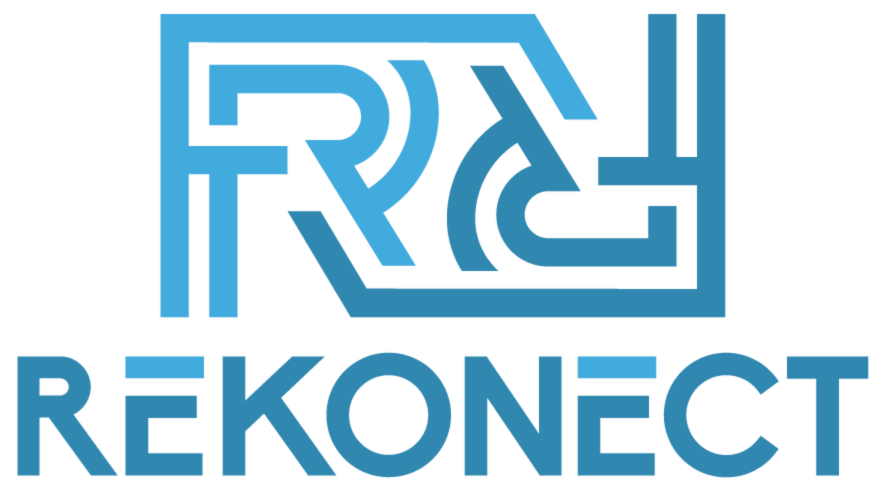Nonprofit governance shapes every aspect of a charitable organization’s success. It provides the structure that aligns leadership, staff, and volunteers. Strong governance keeps everyone focused on ethical conduct and mission-driven impact.
When governance is weak, confusion and inefficiency take hold. Roles blur, and decision-making stalls. This often leads to wasted resources and eroded trust. Good governance prevents these issues and fosters sustainable progress.
What Is Nonprofit Governance?
Nonprofit governance refers to the policies and systems that guide an organization’s actions. It sets the standards for accountability, transparency, and ethical behavior. These standards apply to both strategic decisions and daily activities.
Well-designed governance ensures that each person knows their responsibilities. It also clarifies who has final authority in critical situations. This clarity saves time and reduces conflict.
Effective governance is a continuous process, not a one-time event. Leaders must review and update policies as conditions change. This flexibility safeguards the organization’s health.
Key Elements of Nonprofit Governance
- Clear bylaws that define structure and leadership roles
- Transparent reporting systems for finances and operations
- Regular evaluations of board performance
- Defined procedures for conflicts of interest
Why Governance Matters for Mission Fulfillment
A nonprofit’s mission drives all activities, from fundraising to community outreach. Governance ensures that mission statements remain more than lofty ideals. It connects day-to-day work with long-term goals.
Boards set priorities that reflect the core purpose of the organization. Managers and staff then develop programs that address specific community needs. This alignment prevents mission drift and keeps everyone on track.
Solid governance also helps nonprofits withstand unexpected challenges. When crises arise, governance structures provide clarity about who decides next steps. This reduces chaos and speeds up effective responses.
Mission fulfillment becomes harder if governance is disorganized. Without clear direction, funds might be misallocated or program goals overlooked. Over time, stakeholders lose confidence in leadership.
Mission-Aligned Governance Practices
- Regular board discussions that revisit the organization’s core purpose
- Annual strategic planning sessions to set measurable objectives
- Consistent staff check-ins to link daily tasks with mission goals
- Transparent sharing of mission outcomes with donors and the public
The Board of Directors: Guardians of Governance
A strong board of directors is central to nonprofit governance. Board members hold legal responsibility for the organization’s overall performance. They guide strategic direction, approve budgets, and oversee high-level policies.
Board members often have diverse backgrounds in finance, marketing, or law. This variety helps them tackle complex problems from multiple angles. They represent the organization in the community and attract new supporters.
The board also evaluates the executive director or CEO. They review leadership effectiveness, program impact, and financial health. This oversight preserves accountability throughout the organization.
However, some boards struggle to stay focused on governance. They might micromanage daily operations or fail to meet often enough. Clear bylaws and consistent meeting schedules help boards avoid these pitfalls.
Ways Boards Strengthen Governance
- Crafting detailed committee charters for specialized tasks
- Holding yearly retreats to plan strategic priorities
- Setting term limits to ensure fresh ideas and perspectives
- Conducting annual self-assessments to identify performance gaps
Executive Leadership and Daily Operations
While the board guides strategy, the executive director or CEO manages daily functions. They lead staff, build community partnerships, and implement board-approved plans. This crucial role demands strong communication and problem-solving skills.
The executive director ensures that programs align with the mission. They oversee finances, track outcomes, and adjust strategies when needed. Their decisions shape an organization’s culture and influence volunteer engagement.
Clear communication between the board and executive leadership is vital. Frequent updates prevent misunderstandings and keep everyone focused on shared goals. This transparency strengthens trust and respect.
Executives who value governance prioritize ethical decision-making. They also encourage professional development for staff and volunteers. This culture of continuous learning benefits both internal teams and the communities served.
Traits of Effective Executive Leadership
- Ability to translate board vision into tangible action plans
- Strong financial oversight and budget management skills
- Willingness to delegate tasks to capable team members
- Openness to feedback from staff, board, and external stakeholders
Volunteers and Their Governance Role
Volunteers expand a nonprofit’s capacity to serve. They contribute time, skills, and fresh perspectives. In many nonprofits, volunteers even outnumber paid staff.
Governance includes the policies that guide volunteer engagement. These policies set expectations, training standards, and safety procedures. Clear guidelines create a positive volunteer experience and reduce liability risks.
Volunteers appreciate organizations that value accountability and transparency. They want to see how their work connects to broader objectives. When volunteers understand governance, they become ambassadors for the cause.
Engaged volunteers often share ideas for improving services. Leaders should regularly seek volunteer feedback and implement worthy suggestions. This inclusiveness fosters loyalty and sparks innovative thinking.
Volunteer-Related Governance Practices
- Providing written role descriptions and training manuals
- Offering regular orientation sessions to align values and ethics
- Recognizing volunteer contributions through events or newsletters
- Gathering feedback via surveys or informal check-ins
Common Governance Challenges
Even well-structured nonprofits face governance hurdles. Identifying these challenges is the first step toward effective solutions. Below are some common stumbling blocks.
Lack of Role Clarity
- Overlapping duties can confuse staff and cause friction
- Board members might unintentionally micromanage everyday tasks
Poor Communication
- Infrequent updates leave teams uninformed and disconnected
- Mixed messages can waste time and affect program outcomes
Inadequate Training
- New board members may misunderstand financial statements
- Volunteers might not know their responsibilities or safety protocols
Insufficient Diversity
- Homogeneous boards can overlook cultural nuances or minority perspectives
- Narrow viewpoints may limit donor outreach and mission reach
Resistance to Change
- Longstanding leaders might cling to outdated policies
- Attempts at innovation can stall when key people refuse to adapt
Strategies for Strengthening Nonprofit Governance
Nonprofits can follow multiple approaches to improve governance. Each strategy should reflect the organization’s size, culture, and goals. Thoughtful implementation leads to lasting positive change.
Conduct a Governance Audit
- Review bylaws and policy manuals with a legal expert
- Compare current practices with recommended standards
- Identify gaps in oversight or unclear procedures
Clarify Roles and Responsibilities
- Update job descriptions for board members, staff, and volunteers
- Make sure decision-making authority is clearly documented
- Establish formal reporting structures for accountability
Offer Ongoing Training and Support
- Organize workshops for financial literacy and fundraising
- Encourage peer learning sessions among board members
- Provide clear orientation for new volunteers and staff
Embrace Diversity and Inclusion
- Recruit board members from various cultural and professional backgrounds
- Rotate leadership positions to incorporate fresh viewpoints
- Seek feedback from underserved communities you aim to help
Leverage Technology
- Use cloud-based platforms for board document sharing
- Schedule regular virtual meetings for remote stakeholders
- Track program metrics with user-friendly data software
Foster a Culture of Accountability
- Set measurable goals tied to strategic objectives
- Report progress during board meetings and public updates
- Recognize successes and address shortfalls promptly
Plan for Transitions
- Create succession plans for key leadership roles
- Maintain updated contact lists and procedural documents
- Train potential leaders early to ensure continuity
Maintaining Governance Over Time
Governance is an ongoing commitment that evolves with the organization. Periodic reviews keep bylaws relevant and leadership-focused. Stagnant governance can undermine mission success and public trust.
Frequent check-ins help identify emerging risks or inefficiencies. These check-ins can occur during annual retreats or quarterly board sessions. They create space for honest reflection and goal-setting.
Leaders should also monitor new regulations affecting nonprofits. Compliance demands can shift as governments update laws. Staying informed prevents costly mistakes and preserves credibility.
Many nonprofits use committees to manage specialized tasks. Committees oversee finance, human resources, or audit processes. This structure reduces the board’s workload and ensures expert input.
Governance Review Tactics
- Conduct annual surveys to gauge stakeholder satisfaction
- Review financial statements for trends or red flags
- Track board and volunteer attendance as a measure of engagement
- Perform occasional policy updates to align with industry standards
Real-World Impact of Good Governance
Effective governance drives real-world outcomes that enrich communities. Donors see that funds go to relevant programs, making them more likely to give again. Volunteers feel appreciated and stay engaged longer.
Communities benefit from well-planned services that address urgent needs. Transparent reporting lets beneficiaries see how resources are used. This transparency fosters a sense of shared ownership in the nonprofit’s progress.
A well-governed organization can also form partnerships more easily. Local businesses or government agencies prefer reliable, accountable partners. These alliances often lead to larger projects and increased visibility.
Strong governance supports long-term sustainability. As staff or board members change, the mission remains steady. This resilience helps nonprofits weather crises without losing momentum.
Conclusion
Nonprofit governance is a vital framework that shapes ethical decision-making and mission success. It defines roles, promotes accountability, and keeps leaders focused on real impact. When governance thrives, nonprofits gain credibility and community support.
Board members guide strategy and ensure high-level oversight. Executives translate vision into daily operations. Volunteers amplify reach and add fresh perspectives. Together, these roles create a powerful engine for positive change.
Organizations should view governance as an ongoing process. Regular audits, updates, and training keep structures efficient. Embracing diversity and leveraging technology further strengthen governance outcomes.
Effective governance paves the way for stable growth and deep community trust. It safeguards donor relationships, secures volunteer loyalty, and delivers consistent program quality. Ultimately, it frees nonprofits to focus on what matters most: serving their mission.
Take time to evaluate your governance structures now. Involve your board, staff, and volunteers in open conversations. Identify areas for improvement and craft a clear plan. Strong governance is the key to long-lasting success and meaningful impact.
Want to learn more about Nonprofit Governance? Connect with Rekonect today to gain access to a wide range of nonprofit solutions.

